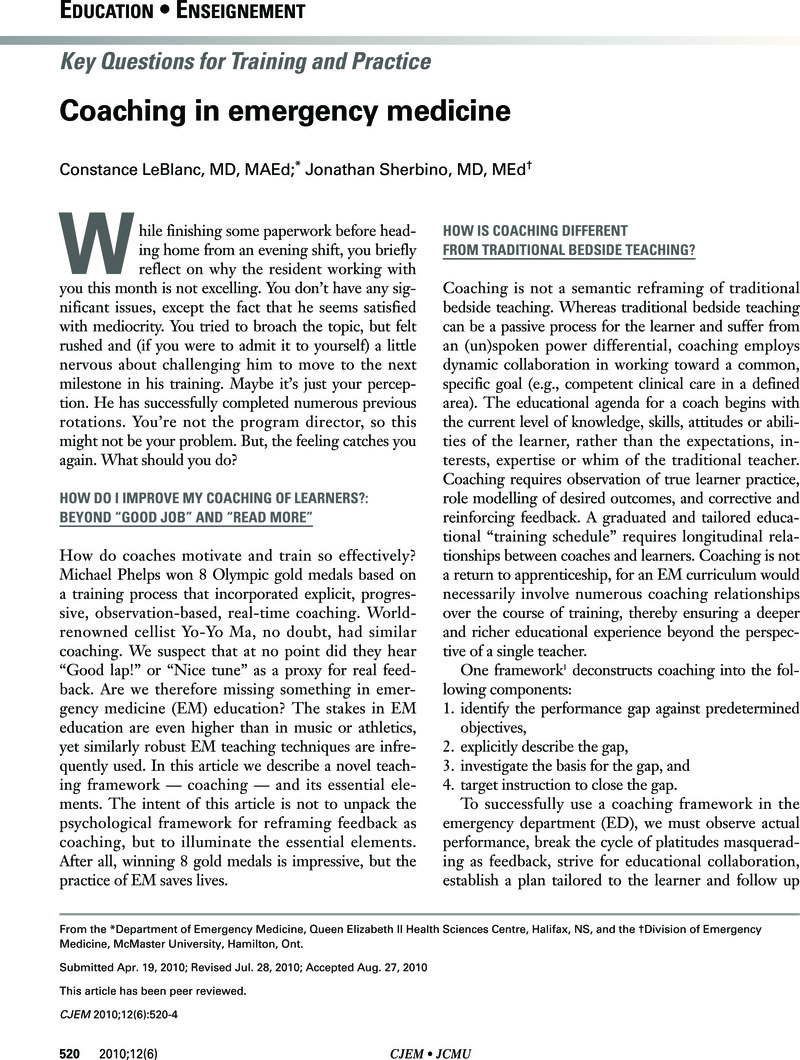Crossref Citations
This article has been cited by the following publications. This list is generated based on data provided by Crossref.
Garmel, Gus M.
2012.
Practical Teaching in Emergency Medicine.
p.
35.
Sherbino, Jonathan
Joshi, Nikita
and
Lin, Michelle
2015.
JGME-ALiEM Hot Topics in Medical Education Online Journal Club: An Analysis of a Virtual Discussion About Resident Teachers.
Journal of Graduate Medical Education,
Vol. 7,
Issue. 3,
p.
437.
Eppich, Walter J.
Mullan, Paul C.
Brett-Fleegler, Marisa
and
Cheng, Adam
2016.
“Let's Talk About It”: Translating Lessons From Health Care Simulation to Clinical Event Debriefings and Coaching Conversations.
Clinical Pediatric Emergency Medicine,
Vol. 17,
Issue. 3,
p.
200.
Graddy, Ryan
Reynolds, Stasia S.
and
Wright, Scott M.
2018.
Coaching Residents in the Ambulatory Setting: Faculty Direct Observation and Resident Reflection.
Journal of Graduate Medical Education,
Vol. 10,
Issue. 4,
p.
449.
Sheng, Alexander Y.
Clark, Avery
and
Amanti, Cristopher
2020.
Supervision of Resident Physicians.
Emergency Medicine Clinics of North America,
Vol. 38,
Issue. 2,
p.
339.
Graddy, Ryan
Reynolds, Stasia S.
and
Wright, Scott M.
2020.
Longitudinal resident coaching in the outpatient setting: A novel intervention to improve ambulatory consultation skills.
Perspectives on Medical Education,
Vol. 9,
Issue. 3,
p.
186.
Sobel, Julia
Hayden, Stephen R.
and
Wardi, Gabriel
2023.
The Knowledge Gap: Mentorship in Emergency Medicine Residency.
Annals of Emergency Medicine,
Vol. 82,
Issue. 1,
p.
47.



